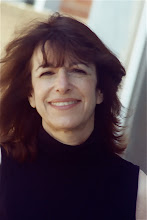They’re easy to whip up, once you’ve chosen an appealing subject in his/her typical setting.
Word Problem Lesson with Dinosaurs
1. Read Tyrannosaurus Math.
2. Make a list of the animals and objects that were used in the math problems (other dinosaurs, teeth, bugs, footprints, leaves, rocks, a tree, etc.).
3. Look at the pictures in the book and come up with other things T-Math could have counted (horns, bony plates, petals on flowers, etc.).
4. Pick one of these things and make your own word problem, using the math operation of your choice.
5. Draw a picture to illustrate the problem.
Any good non-fiction book that has lots of detailed illustrations can be a rich source for word problems. In the following example, I’ll use pirates.
Word Problem Lesson with a Fun Main Character: Pirates

1. Pick a math skill, (I’ll choose triple digit addition.)
2. Read or browse: Jan Adkin’s What If You Met A Pirate.
3. You’re going to write a word problem about a pirate. Brainstorm a list of items or people that might be in his setting - ships, sails, parrots, gold coins, etc. (My character will be Captain Jack, and the items will be treasure chests.)
4. Think of an action that could involve math, using that item. (A pirate needs to travel a certain number of miles to chase the galleon with the treasure chests. Or it will take him a certain number of days. Or he will count up the money in the chest. I’ll pick the money.)
5. Write the problem. (Captain Jack and his crew captured a galleon. There were two treasure chests on board. One had 715 gold pieces, and the other had 826. How many gold pieces were there all together? )
6. Optional: Add details and description to your problem to make it more fun:
Captain Jack and his crew chased a galleon. After a heated battle that lasted six hours they captured the ship. The men could hardly wait to open the treasure chests. There might be diamonds, rubies, and lots of gold. Actually there was 715 gold pieces in one chest, and 826 in the other. How many gold pieces were there all together?
7. Illustrate the problem.
And that, me hearties, is just one way to combine non-fiction, writing, math, and art. If you're a parent and/or a teacher, what non-fiction books might you use? If you're a non-fiction writer, what cool word problems could arise from your book(s)? AARGH!








What a great way to incorporate non-fiction, writing, math and art! Tyrannosaurus Math looks like such a fun book--I can't wait to check it out!
ReplyDeleteAll the best,
Lori
www.loricalabrese.com
You have great ideas. I plan to try some.
ReplyDeleteThanks!
Thank you!!!I am writing a teachers website for my book "Earthquake." I had thought the math portion would be a tactile examination of what the numbers on the Richter scale meant. I was started with calling a 3.1 earthquake one grain of rice. a 4.0 - ten grains of rice, a 5.0 one hundred grains of rice, a 6.0 one thousand grains of rice... I was so proud of myself until I tried to graph it! At that point I realized the my assumption that the Richter was based on a power of ten was erroneous. I have searched the internet and could not find an excel graph of the Richter. I do not know how to make one.
ReplyDeleteThen I read yoour blog and a light blinked on for me. I can make word problems!!! Thank you
Glad you found this useful. Susan, the subject of earthquakes is a natural for word problems! I'd love to see what you come up with.
ReplyDelete